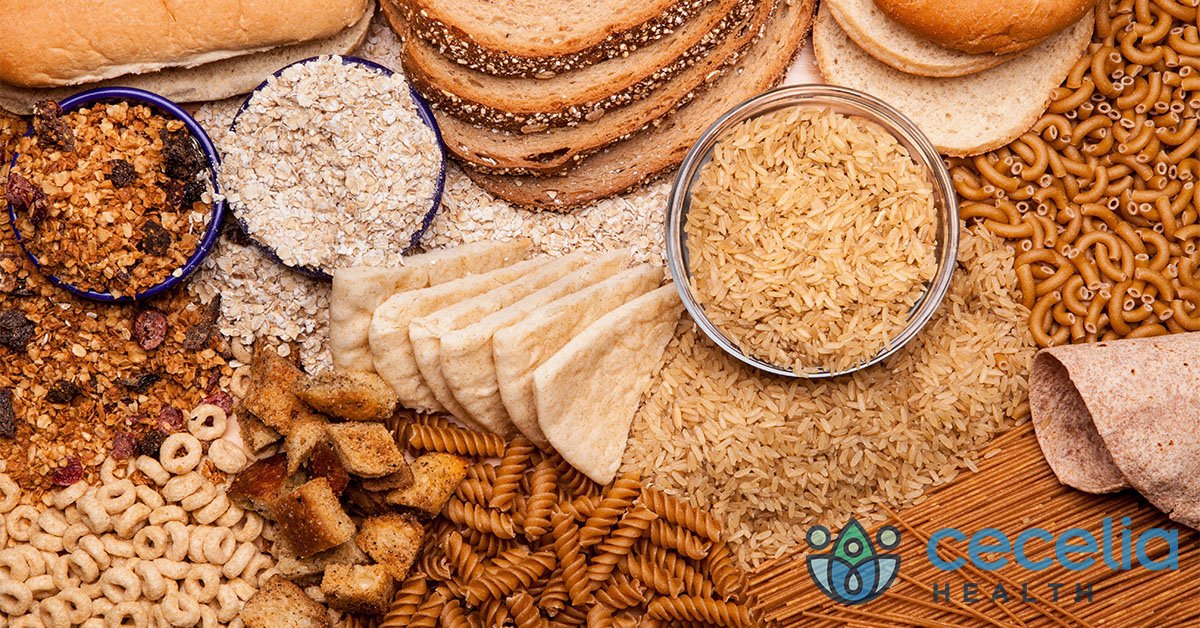What are whole grains?
A food is defined as a whole grain if it has its three original parts — the bran, germ, and endosperm still present in the same proportions when the grain was initially grown in the field. In contrast, refined grains have been milled, which removes the bran and germ. Milling is performed to give grains a finer texture and improve their shelf life, but it comes at cost of removing dietary fiber, iron, and many B vitamins.
One way to identify a whole-grain product is to look for the Whole Grains Council stamp of approval, which is a logo used to label foods containing whole grains. The logo that reads “100% Whole Grain” indicates that the food has only whole grains and at least 16 grams per serving. If a product has the 50%+ Stamp, then at least half of its grain ingredients are whole grain, with a minimum requirement of 8 grams of whole grain per labeled serving. And if the Basic Stamp logo is on the product, then it contains at least 8 grams (a half serving) of whole grain, yet it may contain more refined grain than whole.
Whole grains include grains like wheat, corn, rice, oats, amaranth, barley, buckwheat, quinoa, sorghum, millet, spelt, rye and even popcorn – when these foods are eaten in their “whole” form. If a whole grain ingredient is not listed as the first ingredient on a product’s food label, then the item may contain only a small portion of whole grains.
Why is including whole grains in your diet important?
A diet rich in whole-grains has been shown to have a beneficial effect in controlling postprandial (after-meal) blood glucose levels and for reducing serum cholesterol levels. Some studies have shown a glucose and lipid lowering benefit with fiber intake of up to 50 grams daily. Fiber intake from whole grains has also been associated with a reduction in diabetes risk in a number of studies. One of these studies in particular, called the six-year Nurses’ Health Study, involved more than 65,000 participants and found that women on a low-fiber diet that was heavy in processed, sugary foods were 2.5 times more likely to develop type 2 diabetes versus those who ate at least 25 grams of fiber daily. In addition, whole grains contain valuable nutrients like antioxidants, as well as B vitamins, vitamin E, magnesium and iron.
Whole grain starches provide your body with energy but its important to avoid overdoing it on your portions, which can translate to high blood sugars after eating. A general recommendation is to keep your whole grain starch portions to a quarter of your plate and choose whole grain varieties that are high in fiber, meaning at least 3 or more grams of fiber per serving.
How can you increase daily intake of whole grains?
The best way to get more whole grains in your meals is to substitute whole grain foods for refined products. Gradually start replacing the refined grains in your kitchen cabinets with whole grain foods and consume moderate portions.
- When a recipe calls for white flour (all-purpose), experiment by replacing some of the flour with a whole grain variety.
- Use a whole grain as a side dish or mix it with vegetables, lentils, or beans.
- Every week try one new grain that you have not used before. Some examples include: quinoa, brown rice, bulgur, or kasha.
- Substitute whole grain bread in place of white bread for toast and sandwiches.
- Add whole grains like whole wheat pasta, brown rice, barley or quinoa to soups, salads, or casseroles in place of white rice or pasta.
- Choose a cooked whole grain as a hot breakfast cereal, like oats, multigrain blends or try a baked oatmeal recipe.
- Try whole grain cold cereal for breakfast and snack. If you are not used to bran or other high-fiber cereals, try mixing them with equal amounts of your regular cereal.
- Switch to whole-grain crackers instead of saltines or other white-flour snack crackers.
- Use oatmeal in place or whole wheat bread crumbs in items such as meatloaf or meatballs
